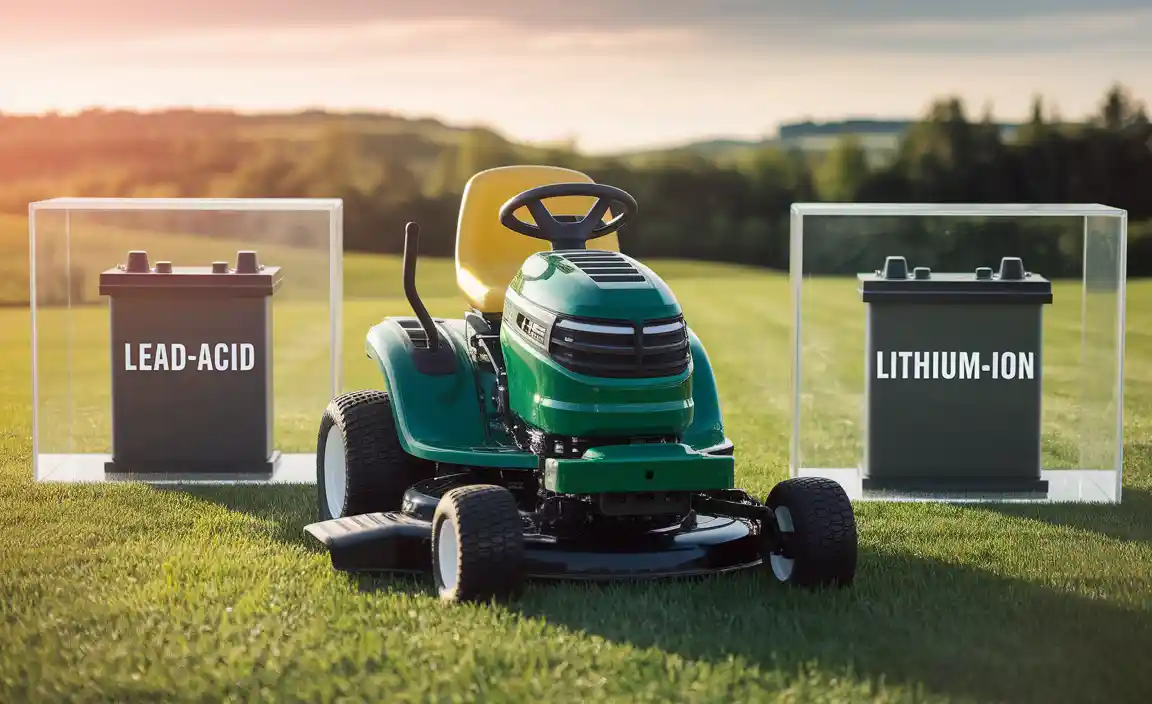Have you ever wondered how desert plants survive without water? Picture this: the hot sun shines down, the land is dry and dusty, yet some plants thrive. How do they do it? This is where adaptations for desert plants come into play.
Desert plants, like cacti, have amazing tricks. These tricks help them live in the harshest places on Earth. Some store water in their thick leaves or stems. Others have roots that reach deep into the ground. Did you know that not all desert plants look dry and thorny? Some, like the desert lily, boast beautiful blooms!
Imagine if you could drink one glass of water and stay hydrated for a week. That’s close to what some desert plants can do. They store water to survive until the next rain. Curious to learn more about these plant superheroes and their survival secrets? Let’s dive into the world of desert plant adaptations and discover their hidden powers.
Adaptations For Desert Plants: Survival Strategies In Arid Environments
Adaptations for Desert Plants
Desert plants live where it’s super hot and dry. How do they survive? They have amazing tricks! Many store water in their leaves, like cacti with thick, juicy tissues. Some have tiny leaves or none at all to reduce water loss. Their roots spread wide or deep to capture any moisture. Fun fact: some desert plants bloom only after it rains. Isn’t that clever? Nature sure knows how to adapt!Unique Water Conservation Strategies
Characteristics of succulent tissues. Mechanisms of reducing water loss through transpiration.In the hot desert, plants have a master plan to save water. Imagine a plant storing water like a camel stores food! Well, that’s what succulent tissues do. They are spongy, helping plants hold onto precious drops of water. But that’s not all! Plants also use a secret technique to reduce water loss: stomata dance. These tiny openings close during the day to stop unnecessary water release. It’s like closing the refrigerator door to keep cool air inside!
| Strategy | Purpose |
|---|---|
| Succulent Tissues | Store water |
| Stomata Closure | Reduce transpiration |
Through these smart tactics, desert plants thrive where others wither. Isn’t nature like the ultimate survival guidebook, always ready with a trick up its sleeve?
Root System Adaptations
Shallow vs. deep root systems. The role of root networks in water absorption.Imagine living in a vast, dry desert. How do plants survive? Their roots have special tricks. Some roots spread out wide near the surface. They quickly soak up water from light rains. Others grow deep into the ground. They tap into hidden water sources. This way, desert plants stay alive, even when rain is scarce.
Why do desert plants have shallow root systems?
Shallow roots help desert plants absorb water right after it rains. This quick action is crucial because the water dries up fast in the desert heat.How do deep roots help desert plants?
Deep roots reach water buried underground. Even if it doesn’t rain for a long time, these roots draw water from deep below the surface, keeping plants hydrated.- Shallow roots: Quick access to rainwater.
- Deep roots: Tap into underground water.
Desert plants smartly manage water. Using these root systems, they adapt to dry conditions and thrive where water is precious. As Jon Krakauer writes, “It’s not always necessary to be strong, but to feel strong” — these plants prove it by outsmarting the harsh desert!
Leaf Modifications
Reduction in leaf surface area. Role of waxy coatings and hairs.In deserts, plants often wear hats of clever leaf tricks. Imagine having a giant sun hat to keep cool! Some plants shrink their leaves to save water. These mini-sized leaves help stop the sun from sipping their water. Think of them as the desert’s tiny magicians! Plus, their waxy coats and hair shields work like sunscreen and sweaters. They keep the sun out and moisture in. Desert plants prove that staying stylish can be a lifesaver!
Photosynthesis Variations
CAM photosynthesis process. Advantages of photosynthetic adaptations in arid environments.How does CAM photosynthesis work?
CAM photosynthesis is a special process that helps plants survive in deserts. These plants keep their stomata (tiny openings) closed during the day. They do this to save water. At night, the stomata open to let in carbon dioxide. The plant stores this for photosynthesis during the hot daytime. This unique adaptation allows them to thrive in dry, sunny places.Photosynthesis in desert plants has unique variations. One such method is CAM, or Crassulacean Acid Metabolism, named after the Crassulaceae family, though not limited to them. This process is ideal for arid environments where water is scarce.
- Stomata opens at night, saving water during hot days.
- Carbon dioxide is stored overnight for use in daytime photosynthesis.
- Helps plants like cacti survive extreme heat and dryness.
These plants are very clever. They use CAM photosynthesis to make the most of their surroundings. By opening stomata only at night, they lose less water and still get all the carbon dioxide they need. So, they manage to live and grow even in the desert’s harsh conditions.
Why is this adaptation crucial for survival in deserts?
CAM photosynthesis provides crucial survival benefits for plants in arid environments. By limiting water loss and maximizing carbon absorption, these adaptations ensure plants can withstand prolonged droughts. This ability helps maintain the ecosystem balance, as these plants provide food and shelter to desert animals.Protection from Extreme Temperatures
Structural adaptations for temperature regulation. Behavioral adaptations in plant physiology.How do desert plants stay cool?
Desert plants have special features to stay cool. They have thick leaves, spines, and waxy coatings to keep heat away. These help reduce water loss.Behavioral Adaptations
- Slow growth: Growing slowly helps save water and energy.
- Open at night: Some plants open their stomata only at night. This helps them cool down and save water.
Desert plants know how to survive. They make smart choices to handle the heat. This helps them thrive even in the hottest days of summer.
Defense Mechanisms Against Herbivores
Development of spines and thorns. Chemical deterrents in desert plant species.Some desert plants have smart ways to stay safe from animals. They grow spines and thorns, which keep herbivores away. Think of these as a plant’s armor. Some plants also use chemicals to make them taste bad. Animals remember this and move on to find tastier food. This smart defense helps plants thrive in hot, dry places. Amazingly, these small tricks ensure they can keep growing strong even in tough conditions.
What are some unique features of desert plants?
Desert plants have special features like spines and waxy surfaces. These help them survive in dry areas. Spines keep animals away, and wax helps them store water.How do spines help desert plants?
Spines protect plants from animals. Animals can’t eat the plant because of the sharp, poky spines. This keeps the plant safe.
Why do desert plants taste bad?
They use chemical deterrents to taste bad. This stops animals from eating them. The bad taste makes animals search for better food.
These clever adaptations show how desert plants are like superheroes. They protect themselves and keep thriving where other plants cannot. It’s like they have special powers in the wild!
Ecological Roles and Interactions
Symbiotic relationships with insects and animals. Contributions to desert ecosystems and biodiversity.Desert plants, like a well-prepared scout, have formed many useful friendships in the wild. They partner up with insects and animals to help each other out. For instance, some plants use nectar to attract ants. These ants, in return, offer protection, much like tiny bodyguards. Plus, when animals munch on desert plants, they spread seeds, helping more plants grow. This teamwork boosts biodiversity, making the harsh desert a bit more neighborly. Imagine a desert without them—it would be a bit like a playground with no kids! Here’s how these relationships look:
| Plant | Symbiotic Partner | Benefit |
|---|---|---|
| Cactus | Bats | Pollination |
| Acacia Tree | Ants | Protection & Seed Dispersal |
Examples of Adapted Desert Plants
Analysis of the Saguaro cactus adaptations. Features of the Desert Rose and its survival strategies.In the desert, plants have amazing tricks. The Saguaro cactus can hold tons of water. It has spines instead of leaves. These stop the sun from burning it. The Desert Rose has a fat trunk. This stores water for dry times. Its flowers bloom bright to attract insects. Both these plants have special ways to live where water is scarce. Their adaptations help them survive and thrive even in harsh desert conditions.
Why do desert plants need special features?
Desert plants need special features to live in very dry areas. These plants, like cacti and roses, have ways to save water. They have thick skins and store water for dry days. This helps them survive without rain for a long time.How does the Saguaro cactus store water?
Saguaro cacti store water in their thick stems. These plants soak up rainwater and save it. The stem can expand and hold a lot of water. This helps the cactus stay alive during hot, dry days.Why do Saguaro cacti have spines instead of leaves?
- Spines protect the cactus from the hot sun.
- Spines keep animals away, preventing water loss.
- Spines help shade the cactus.
Did you know? Cacti can live up to 200 years! Many kids find it fascinating how these plants have taught themselves to stay cool even under the hot desert sun. As we learn more about these amazing plants, we find they use their features wisely, just like how we wear a hat for shade!
Conclusion
Desert plants have cool ways to survive in hot, dry places. They store water, have deep roots, and thick skins. You can explore more about their amazing adaptations in books or online. Learning about these plants helps us see how nature solves tough problems. Next time, try growing a small cactus at home to observe these adaptations firsthand!FAQs
What Are The Key Physiological Adaptations That Enable Desert Plants To Conserve Water In Arid Environments?Desert plants have clever tricks to save water. They often have thick skins or waxy coatings that stop water from escaping. Some have tiny leaves or no leaves at all to reduce water loss. They also store water in their thick stems or roots for later use. These plants can survive in hot, dry places because they are so good at saving water!
How Do Structural Adaptations, Such As Leaf Size And Surface Features, Help Desert Plants Survive Extreme Heat And Drought Conditions?Desert plants have special tricks to stay alive in very hot and dry places. They often have small leaves. Small leaves help them lose less water in the sun. Some plants also have waxy surfaces on their leaves to keep water inside. These features help them survive when it’s really hot and there’s not much water.
In What Ways Do Root Systems Of Desert Plants Differ From Those In More Temperate Climates, And How Do These Adaptations Assist In Water Absorption?Desert plants have special roots to find water. Their roots are either very long or spread out wide. This helps them reach water deep underground or catch rainwater quickly. In temperate areas, plants have shorter roots because water is more available. These root designs help desert plants stay alive by soaking up every drop of water they can find.
What Role Do Cam (Crassulacean Acid Metabolism) And C4 Photosynthesis Play In The Survival Of Desert Plants?Many desert plants use special ways to make food and survive in the hot, dry desert. One way is called Crassulacean Acid Metabolism (CAM). At night, they open their leaves to take in air and store it. During the day when the sun is hot, they use the stored air to make food. Another way is C4 photosynthesis. These plants have a special way to make food using less water. Both help desert plants live with little water.
How Do Desert Plants Protect Themselves From Herbivores And Extreme Weather Conditions Through Chemical Adaptations?Desert plants have special tricks to stay safe. They make chemicals to taste bad, keeping animals from eating them. These plants also produce waxy coatings to hold water inside, helping them survive in the hot sun. These chemical helpers are like the plants’ very own sunscreen and bug spray!





